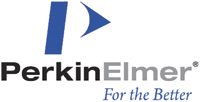Reduced Solvent Usage and Increased Throughput for PAH Analysis Using UHPLC
The Application Notebook
Polynuclear aromatic hydrocarbons (PAHs) are carcinogenic condensed ring aromatic compounds widely found as trace pollutants in waters, wastes, air particulates, soil and foods. PAHs can be routinely monitored using HPLC with a combination of UV and fluorescence detection as prescribed in EPA methods 550.1, 610 and 8310.
Wilhad Reuter, Eric Denoyer and William Goodman, PerkinElmer Inc., Waltham, Massachusetts, USA.
Introduction
Polynuclear aromatic hydrocarbons (PAHs) are carcinogenic condensed ring aromatic compounds widely found as trace pollutants in waters, wastes, air particulates, soil and foods. PAHs can be routinely monitored using HPLC with a combination of UV and fluorescence detection as prescribed in EPA methods 550.1, 610 and 8310.
Conventional HPLC analysis of 19 PAHs typically requires 20 minutes and uses 25 mL of acetonitrile. However, there is a continual drive to improve productivity and reduce solvent consumption and waste in chemical analysis. Using ultra high pressure LC (UHPLC) with sub-2 μm particle-size columns, we demonstrate a 3-fold improvement in throughput and a 90% reduction of mobile phase solvent in the determination of 19 PAHs.
Experimental
A Flexar FX-15 UHPLC system comprising a Flexar FX-15 UHPLC pump with vacuum degassing, Flexar FX UV/vis UHPLC detector (operated at 100 pt/sec data acquisition rate), Flexar fluorescence detector, Flexar column oven and Flexar FX UHPLC autosampler (PerkinElmer Inc.), was used for UHPLC analysis. System control and data handling were performed using Chromera chromatography data system (PerkinElmer Inc.). Separation was achieved using a 1.9 μm 50 × 2.1 mm Pinnacle DB PAH column (Restek Corp.) at a flow-rate of 0.7 mL/min at 45 °C. A 4 minute linear gradient from 52% acetonitrile in water to 100% acetonitrile was used with an initial operating pressure of 11800 psi.
Conventional chromatography was run on a Series 200 HPLC system (PerkinElmer Inc.) outfitted with an oven as well as UV/vis and fluorescence detectors. TotalChrom chromatography software was used for system control and data handling. A 5 μm 150 × 3.2 mm Brownlee Analytical PAH column (PerkinElmer Inc.) was used at a flow-rate of 1.2 mL/min and a temperature of 30 °C. An 11 minute two-step linear gradient from 40% acetonitrile in water to 100% acetonitrile was used, followed by a 9 minute hold with an initial operating pressure of 2500 psi.
Discussion
Figure 1 shows that a significant improvement in throughput was achieved using UHPLC compared to conventional HPLC. Total analysis time (including equilibration time) was reduced 3-fold. Moreover, excellent resolution is achieved using UHPLC methodology, even while achieving significant throughput improvement.

Figure 1
Another important factor is the reduction in solvent consumption. The UHPLC method illustrated here consumes six times less acetonitrile, representing an 83% reduction in solvent cost and waste generated. As laboratories around the world strive to achieve 'greener', more productive operations, the throughput improvement achieved, combined with the reduction in hazardous waste material generated, is a significant benefit of UHPLC.

PerkinElmer Inc.
940 Winter Street, Waltham, Massachusetts 02451, USA
tel. +1 800 762 4000
Website: www.perkinelmer.com

Removing Double-Stranded RNA Impurities Using Chromatography
April 8th 2025Researchers from Agency for Science, Technology and Research in Singapore recently published a review article exploring how chromatography can be used to remove double-stranded RNA impurities during mRNA therapeutics production.
Troubleshooting Everywhere! An Assortment of Topics from Pittcon 2025
April 5th 2025In this installment of “LC Troubleshooting,” Dwight Stoll touches on highlights from Pittcon 2025 talks, as well as troubleshooting advice distilled from a lifetime of work in separation science by LCGC Award winner Christopher Pohl.


















